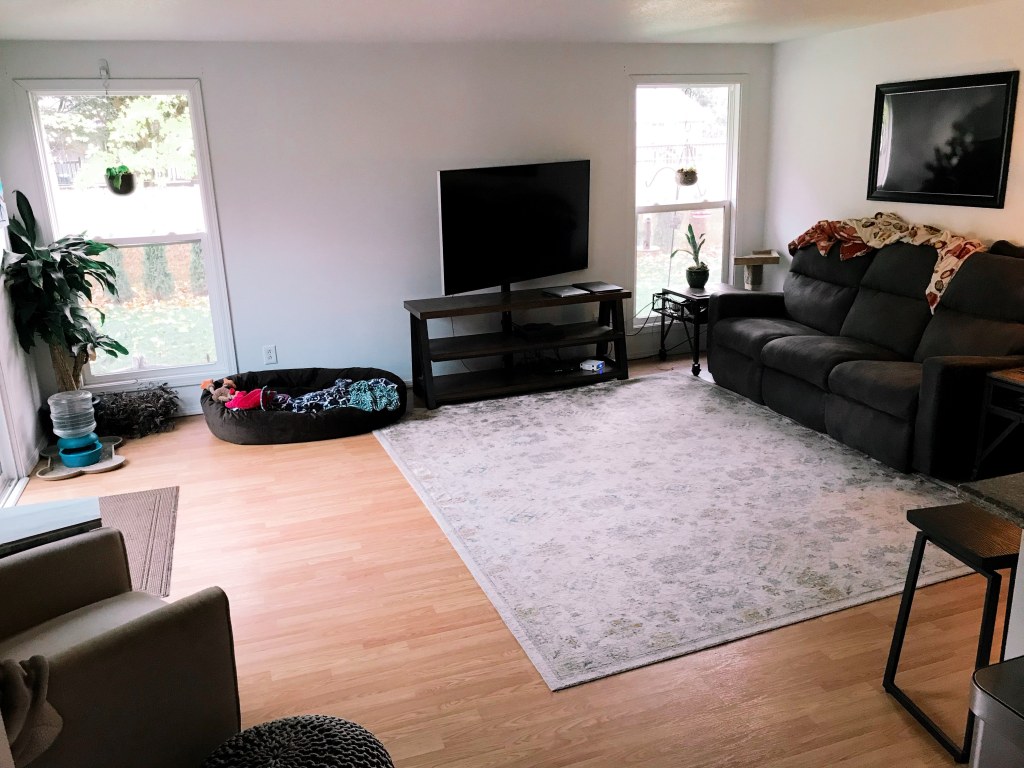Embracing Minimalism: Thriving Amidst A Hoarder’s Clutter – Experience The Transformation Now!
Minimalist Living with a Hoarder
Greetings, Readers! Today, we delve into the intriguing world of minimalist living with a hoarder. It may seem like an impossible combination, but this unique scenario presents its own challenges and rewards. In this article, we will explore the what, who, when, where, why, and how of minimalist living with a hoarder, along with its advantages and disadvantages. Additionally, we will provide answers to frequently asked questions and conclude with some actionable steps. So, without further ado, let’s embark on this enlightening journey!
Table of Contents
Introduction
What is Minimalist Living with a Hoarder?
Who is a Minimalist Living with a Hoarder?
When Does Minimalist Living with a Hoarder Become Necessary?
Where Can Minimalist Living with a Hoarder Take Place?
Why Embrace Minimalist Living with a Hoarder?
How to Make Minimalist Living with a Hoarder Work?
Advantages of Minimalist Living with a Hoarder
Disadvantages of Minimalist Living with a Hoarder
FAQs about Minimalist Living with a Hoarder
Conclusion
Final Remarks
2 Picture Gallery: Embracing Minimalism: Thriving Amidst A Hoarder’s Clutter – Experience The Transformation Now!


1. Introduction
Minimalist living with a hoarder refers to the unique lifestyle where a person who embraces minimalism shares living space with someone who hoards possessions. This coexistence can be challenging, but with understanding and effective communication, it is possible to find a balance that benefits both individuals. In this article, we will explore the dynamics and intricacies of this living arrangement.

Image Source: ytimg.com
Living with a hoarder can be overwhelming, as their excessive accumulation of items often leads to clutter, disorganization, and even potential health hazards. However, by incorporating minimalist principles, such as decluttering, organizing, and prioritizing, it is possible to create a harmonious living environment that promotes peace, functionality, and well-being for everyone involved.
Now, let’s delve deeper into the various aspects of minimalist living with a hoarder and understand how it can be achieved successfully.
2. What is Minimalist Living with a Hoarder?

Image Source: hisandherfipost.com
Minimalist living with a hoarder involves sharing a living space with someone who has a hoarding disorder while embracing minimalism principles. Minimalism emphasizes living with fewer possessions and focusing on what truly adds value to one’s life. On the other hand, hoarding disorder is characterized by the persistent difficulty in discarding or parting with possessions due to a perceived need to save them. Balancing these two contrasting lifestyles requires open communication, empathy, and compromise.
By practicing minimalist principles, such as simplifying and decluttering, individuals can create a more organized and functional living space, improving overall quality of life for both the minimalist and the hoarder.
3. Who is a Minimalist Living with a Hoarder?
A minimalist living with a hoarder can be a family member, a romantic partner, a close friend, or even a roommate. The minimalist plays a crucial role in helping the hoarder navigate their condition and make necessary changes to improve their living environment. The minimalist understands the importance of clear communication, patience, and empathy in creating a supportive and understanding atmosphere.
While the hoarder may struggle with letting go of possessions, the minimalist serves as a source of guidance and encouragement, helping them gradually declutter and find a balance between their desire to hold onto things and the need for a functional living space.
4. When Does Minimalist Living with a Hoarder Become Necessary?
Minimalist living with a hoarder becomes necessary when the hoarding disorder significantly impacts the quality of life of both individuals sharing the living space. Clutter can lead to health and safety risks, hinder daily functioning, and strain relationships. The minimalist recognizes the importance of intervention and provides support to the hoarder in creating a healthier living environment.
It is essential to address the situation as early as possible to prevent the hoarding behavior from escalating further. Open and honest communication is vital in initiating the process of minimalist living with a hoarder.
5. Where Can Minimalist Living with a Hoarder Take Place?
Minimalist living with a hoarder can occur in various settings, including homes, apartments, or any shared living spaces. The location is not the determining factor; instead, the willingness to adapt, compromise, and work toward a harmonious environment is crucial.
Regardless of the physical space, creating designated areas for the hoarder’s possessions and ensuring that shared spaces remain clutter-free can contribute to a more balanced living arrangement.
6. Why Embrace Minimalist Living with a Hoarder?
Embracing minimalist living with a hoarder offers numerous benefits for both individuals involved. For the hoarder, it provides an opportunity to address their hoarding disorder in a supportive and understanding environment. It promotes personal growth, reduces stress, and improves overall well-being.
For the minimalist, it offers a chance to cultivate empathy, patience, and understanding while creating a living space that aligns with their values and promotes a simpler, clutter-free lifestyle. Additionally, it allows for the development of healthier relationships and a more harmonious living environment.
7. How to Make Minimalist Living with a Hoarder Work?
Making minimalist living with a hoarder work requires empathy, understanding, and open communication. Here are some strategies that can help:
Establish Boundaries: Define shared and individual spaces to maintain a sense of order.
Encourage Mindful Decluttering: Support the hoarder in gradually letting go of unnecessary possessions.
Seek Professional Help: Consider involving therapists or professional organizers to aid in the decluttering process.
Practice Effective Communication: Foster an environment where both individuals can express their needs and concerns without judgment.
Promote Compromise: Find a balance between minimalism and hoarding tendencies, respecting the emotional attachment the hoarder may have to their possessions.
Focus on the Benefits: Emphasize the advantages of a clutter-free space, improved well-being, and healthier relationships.
Celebrate Progress: Recognize and celebrate small victories on the journey to minimalist living with a hoarder.
8. Advantages of Minimalist Living with a Hoarder
While minimalist living with a hoarder presents its challenges, it also offers several advantages:
Improved Living Environment: By decluttering and organizing, the living space becomes cleaner, safer, and more functional.
Enhanced Well-being: A clutter-free environment promotes mental clarity, reduces stress, and improves overall happiness.
Strengthened Relationships: Effective communication and understanding foster healthier and more harmonious relationships.
Opportunity for Personal Growth: Embracing minimalist principles allows both individuals to develop empathy, patience, and adaptability.
Financial Benefits: Simplifying possessions can lead to savings by avoiding unnecessary purchases and reducing maintenance expenses.
9. Disadvantages of Minimalist Living with a Hoarder
While there are advantages, there are also some potential disadvantages to consider:
Emotional Challenges: The hoarder may experience emotional distress when parting with possessions, requiring patience and understanding from the minimalist.
Compromise and Negotiation: Finding a balance between minimalism and hoarding tendencies can be challenging and may require ongoing discussions and adaptations.
Maintaining Order: Sustaining a clutter-free space requires consistent effort and commitment from both individuals.
External Judgments: Society’s perception of hoarding may lead to misunderstandings or stigma, requiring the individuals involved to remain resilient.
Potential Relapses: Hoarding tendencies may resurface over time, necessitating continued support and interventions.
10. FAQs about Minimalist Living with a Hoarder
Here are some frequently asked questions about minimalist living with a hoarder:
Q: Can a hoarder change their behavior?
A: Yes, with professional help, therapy, and a supportive environment, hoarders can work towards changing their behavior and creating a healthier living space.
Q: How can I help a hoarder let go of possessions?
A: Encouraging small steps, providing emotional support, and involving professional organizers or therapists can assist hoarders in gradually letting go of possessions.
Q: Should I force a hoarder to declutter?
A: No, forcing a hoarder to declutter can be counterproductive and may cause emotional distress. Instead, focus on creating a supportive environment and encouraging voluntary decluttering.
Q: How can I manage my own minimalist lifestyle while supporting a hoarder?
A: Strive for open communication, set boundaries, and find compromises that respect both the hoarder’s emotional attachment to possessions and your need for a clutter-free space.
Q: Can minimalist and hoarder tendencies coexist peacefully?
A: Yes, with understanding, empathy, and effective communication, minimalist and hoarder tendencies can coexist harmoniously, providing a balanced living environment for both individuals.
11. Conclusion
Minimalist living with a hoarder presents unique challenges, but it is possible to find a balance that benefits both individuals involved. By incorporating minimalist principles and fostering open communication, empathy, and understanding, it is possible to create a living space that promotes well-being, functionality, and healthier relationships. Remember, small steps and consistent effort can lead to significant progress on the journey to minimalist living with a hoarder.
12. Final Remarks
In conclusion, minimalist living with a hoarder is a complex dynamic that requires continuous effort, understanding, and empathy. It is essential to approach the situation with patience and compassion, recognizing that change takes time. If you find yourself in this unique scenario, seek professional help, involve therapists or organizers, and remember that small steps can lead to significant transformations. Embrace the journey of minimalist living with a hoarder, and may it bring you closer to a more fulfilling and clutter-free life.
This post topic: Home Organization


